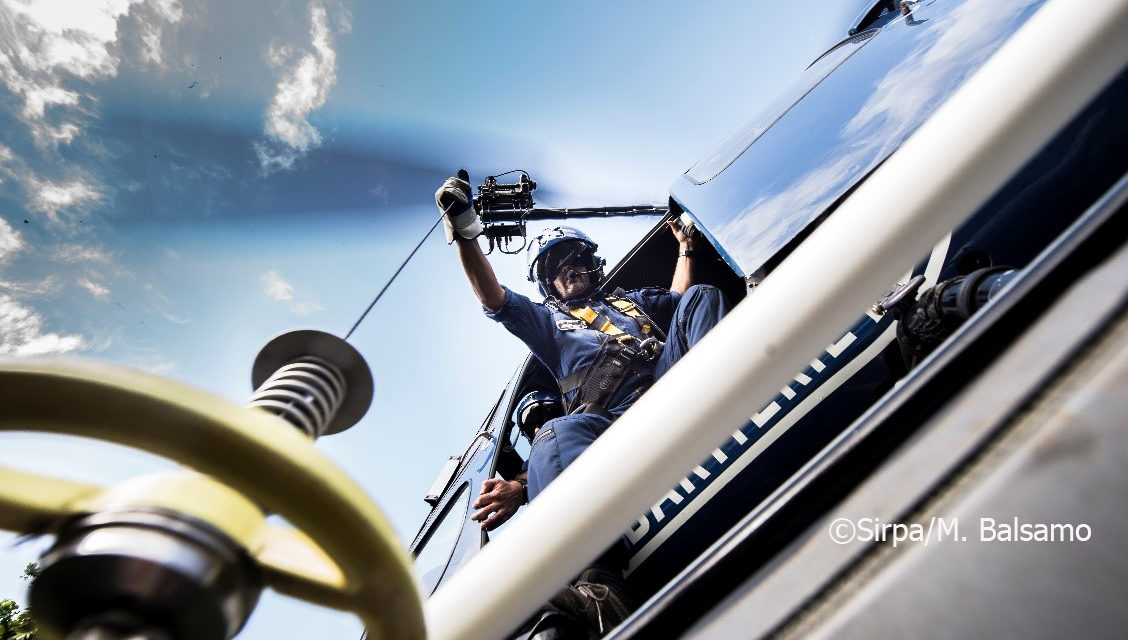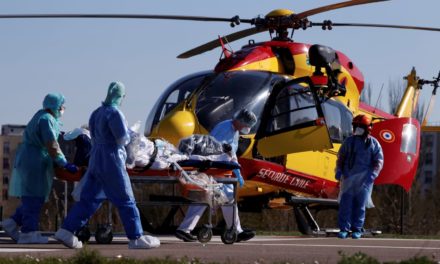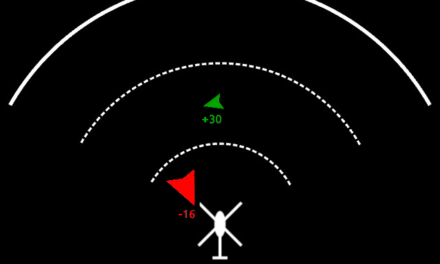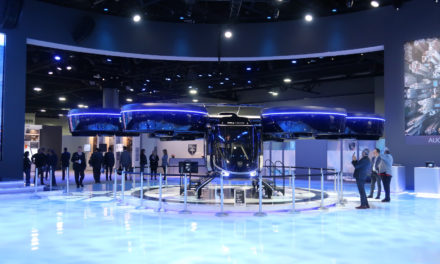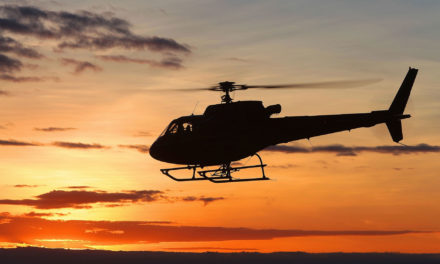By François Blanc
Along with army, air force, Sécurité civile and air ambulance helicopters commitment, rotary-wings aircrafts of the Gendarmerie nationale, in France, participate in many types of missions related to the current health crisis. As for the armed forces and the Sécurité civile, their actions have multiplied over the past few weeks, as their usual role had to be maintained in full epidemic.
Since 1953, the Forces Aériennes de la Gendarmerie nationale, or FAGN (national Gendarmerie air forces), in France and in French overseas territories, are the only internal security air forces. In 2020, they consist of 56 helicopters and 32 drones, divided into 23 units in France and 6 units overseas. The rotary-wings aircrafts implemented by this particular Corps of the helicopter state fleet are of three types: AS350 (for 26 of them), EC145 and EC135 (15 aircrafts of each type). All those units are commanded by the CFAGN (Commandement des forces aériennes de la gendarmerie nationale) from the Vélizy-Villacoublay air force base, located a few kilometers of Paris. The fleet is operational 24 hours a day, 365 days a year.
It flies between 18 000 and 19 300 hours per year, depending on the year. In total, 152 pilots are assigned to it, on a global workforce of 483 officers and non-commissioned officers. The helicopters operational availability rate is “greater than 80 %, thanks to our mechanics and to the Groupement de maintien en condition opérationnelle (GMCO) based at Orléans and Nîmes. The GMCO perform maintenance operations every 1200 hours for the benefit of the AS350s, every 1000 and 800 hours, respectively, on the EC135s and EC145s”, said colonel Emmanuel Sillon, FAGN commander.
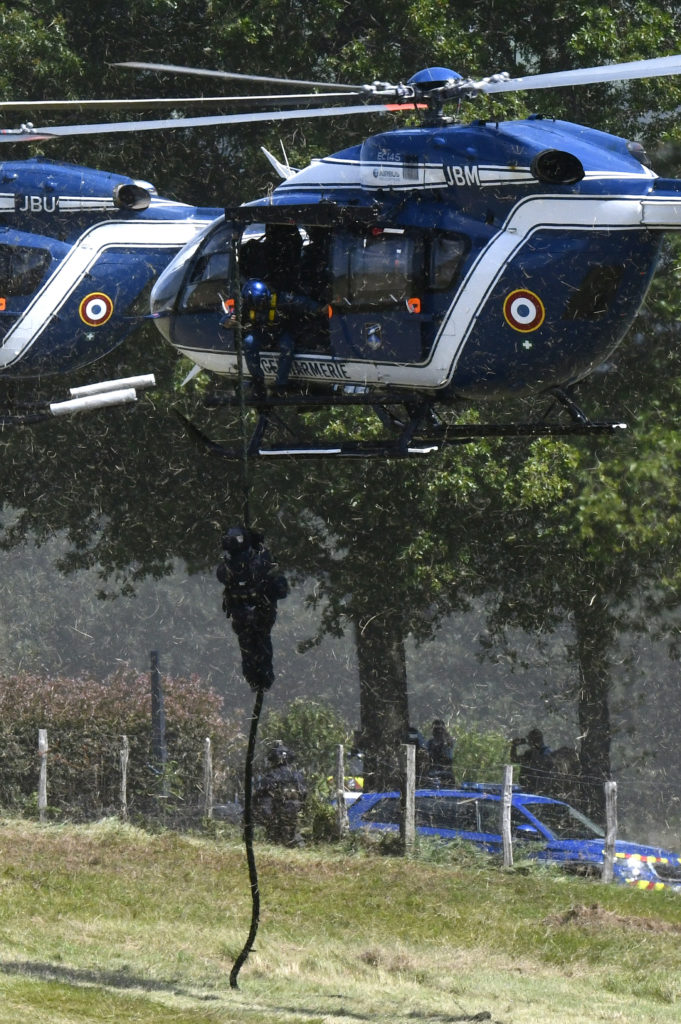
Three action frameworks
Deployed year round in the French airspace, Gendarmerie helicopters work in three areas: information gathering and decision support tool, intervention and crises management and, finally, assistance and rescue. The first part includes policing and judicial police mission. “Air assets allow us to cover large spaces, to anticipate the evolution of events on ground and to provide valuable insights to ground units. Thanks to its on-board advanced equipment, the helicopter is facing more and more complex internal security missions. The aforementioned equipment includes a thermal camera able to film day and night with optimal optical resolution (it allows to read a licence plate one kilometre away); loudspeakers and a spotlight capable, for example, of lighting a soccer filed from 300 m high; a winch and a rope jib used for quick commandos drop-off, such as the GIGN (Groupement d’intervention de la gendarmerie nationale) or the national police RAID (Recherche, assistance, intervention, dissuasion).”
In addition to this equipment, a crisis mapping system is used: the SC2. “SC2 is a complex system which aims within a few hours to establish a cartography of a possibly modified environment. In crisis management, time is a strong constraint. Images acquisition of the situation and associated cartography acquisition are essential for the conduct of operations. In crisis, the map becomes obsolete. Satellite images are slow to come. The crisis upsets usual references: it induces a change of landscape and of values. However, it is essential to understand the crisis in all its dimensions (intrinsic nature, intensity, extent, kinetic). Thus, the SC2 crisis cartography system brings real operational added value in order to plan, prepare and conduct operations, both for the military authorities and for administrative or judicial authorities. Let’s keep in mind that this cartography system had provided valuable services in the framework of the French Var department flood occurred in 2019”, said colonel Emmanuel Sillon.
Intervention and crisis management
The judicial police mission consists in supporting ground units looking for, or in pursuit of criminals. On-board equipment provides forensic evidence.The second part of the role played by Gendarmerie nationale helicopters consists in intervention and crisis management. “Helicopter is a valued ally of counterterrorism capacities and of illegal immigration control. This was the case during Trèbes hostage taking, on 23 march 2019, for the projection of intent elements and intelligence gathering. In the French overseas territories, in particular in Mayotte, the Gendarmerie air section (SAG: section aérienne de gendarmerie) peforms administrative police missions focused on the fight against illegal immigration from Comoros islands.”
Finally, in terms of assistance and rescue, gendarmerie helicopters are implemented “at sea and in the mountains to protect human lives, to ensure the judicial processing of claims and, thus, to protect victims interests. Where access is impossible for men and when particular technique is necessary (hoist), helicopters are taking over.” The health crisis related to Covid-19 epidemic has required the transfer of many patients (more than 600 on mid-April) to French hospitals able to accommodate new patients, but also to care facilities located in Germany, Switzerland, Luxemburg and Austria. FAGN were called upon for this. “Vélizy-Villacoublay, Lyon and Hyères SAGs contribute to these transfers, in order to decongest saturated hospitals. The Vélizy-Villacoublay SAG had been integrated in the Paris-Orly hub.” More precisely, “In the early days of April, seven missions of this kind had been performed, essentially from the sanitary hub established at Paris-Orly and Lyon. Two Gendarmerie aerial units have been solicited: the Vélizy-Villacoubaly and Lyon SAGs.”
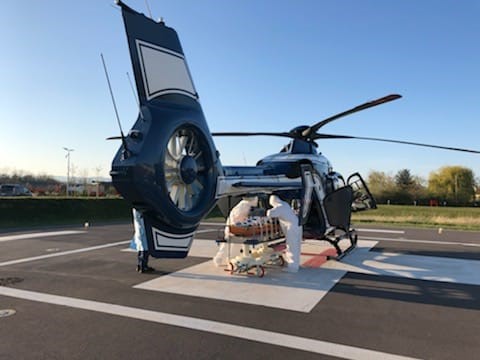
The anti spread fight
Like the other state and private operators called to transfer infected patients, FAGN has to adapt helicopters layout. “Our aircrafts are prepared in accordance with the rules issued by the Ministry of Health for the air ambulance fleets. Those rules were taken over by Airbus Helicopters through two of its recent publications. Otherwise, each aircraft is disinfected after each mission: headset microphone, flight controls and handles are carefully cared for. The facilities are disinfected with every crew change. Individually, during these missions, crews wear protection’s masks, gloves, protective gown, also in accordance with the standards established by the medical authorities.” Along those missions, FAGN aircrafts participate in the support of the internal security forces territorial action, in relation to the containment measures, “just like vital points of interest security operations aiming to preserve the people energy, food and sanitary supply chain.”

